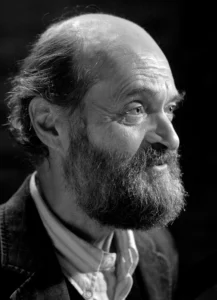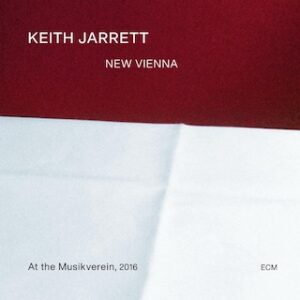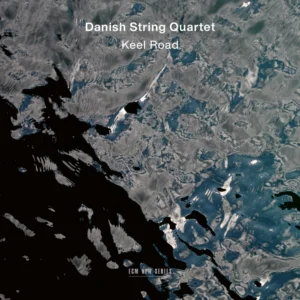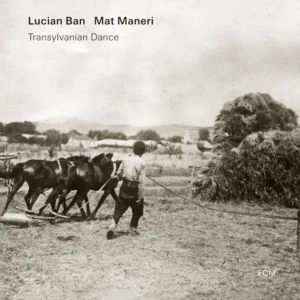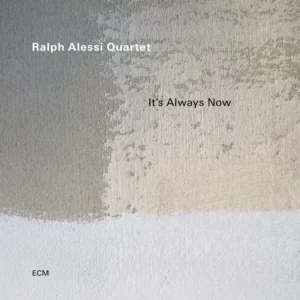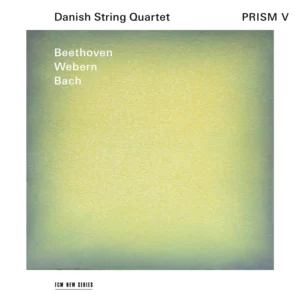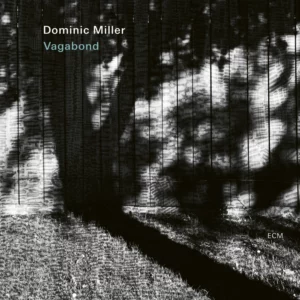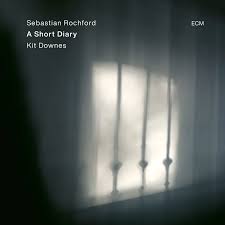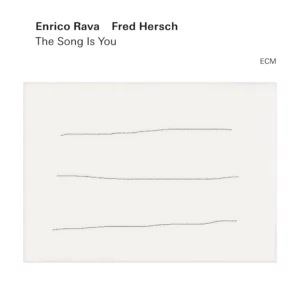Keith Jarrett
New Vienna
ECM Records
Keith Jarrett turned eighty on May 8th, 2025, and to fete him, ECM Records has released New Vienna, a solo piano concert recorded on his last tour, in 2016, at the Goldener Saal, Musik Verein in the Austrian city. A previous recording, The Vienna Concert, recorded in 1991 and released in 2000, was also a solo outing by Jarrett, at the Staatsoper. It has been cherished by many listeners as a particularly fine example among the many live appearances by Jarrett that have been documented and released. New Vienna is a worthy successor.
As is the case with all of Jarrett’s concerts, the pianist incorporates a cornucopia of styles: free jazz, blues and gospel-tinged ballads, various traditional jazz genres, and neo-classicism. “Part I” uses the language of modern jazz as a vehicle for virtuosity, with cascading arpeggios and muscular clusters set alongside thrumming bass register oscillations. There’s also a hint of acknowledgement of Arnold Schoenberg’s early atonal piano pieces, and “Part II” begins like Farben from “Five Pieces for Orchestra” before moving towards a blues-based harmonic vocabulary (more about Schoenberg later). Jarrett revels in the spontaneity engendered by juxtaposition, and here modernity and the vernacular, two seeming opposites, are set side by side. Ultimately, the different vocabularies blend and synthetic scales bridge the distance between them. All the while, Jarrett’s playing is detailed, vibrant, and assured.
“Part III” opens with a rambunctious ostinato in the bass that soon is joined by fluid hard bop soloing. Jarrett may enjoy exploring free play, but his jazz bona fides are well intact here. In “Part IV,” the pianist performs in the spiritual ballad vein that is one of his calling cards. Given that he would soon step away from giving concerts, the arresting nature of his playing here seems even more poignant. On “Part V,” Jarrett remains in a slow tempo, with limpid runs over changes that move through a series of keys. The patterning may be familiar to jazz aficionados, but the touch, delivery, and fluidity of the performance affords it an eminently assured character. Partway through, there is a shift to a standard-worthy melody. The modulatory character is resumed, with the tune parsed and segmented until a solo turn that combines it with scalar passages from the outset. The extraordinarily detailed inflections here belie the sequential character of much of the music.
The title “New Vienna” also seems to be a bit of a pun, as Jarrett has noted in interviews his connection of the city with its past, namely the history of “new” music from approximately a century ago, created by the Second Viennese School of composers: Schoenberg, Alban Berg, and Anton Webern. The affinity for this modernist movement is explored in the concert. Dodecaphony (12-tone writing) is well represented by “Part VI,” which includes a thorough distillation of Schoenberg’s writing into an eight and a half minute long section that is also contrapuntal in design. It is a hat-tip that the audience gets and responds to with enthusiastic applause. Imagine if there were other crowds who would recognize and appreciate an original riff on Schoenberg.
From Part VI, he goes right into a bluesy modal jazz improvisation in “Part VII,” using a descending lamento bass-line to impart a mournful cast. The piece moves to a major key and briefly is reminiscent of the shuffle patterns that are Randy Newman’s stock in trade.
There is a return to the blues in “Part VIII,” the pianist playing in an ambling medium tempo yet soaring time and again with vivacious solos. The closest to idiomatic that Jarrett hews, the section is also an entertaining showcase for this style of playing. “Part IX,” which closes the concert proper, takes on a triumphally funky character.
For an encore, Jarrett plays a chestnut, Arlen and Harburg’s “Somewhere Over the Rainbow,” in a slow rendition that begins mid-bridge. A song that can become overly sentimental quickly, Jarrett manages it tastefully, wringing the most out of the tune without slipping into the bathetic, using substitute chords and countermelodies to turn the performance into an elaborate valediction.
In 2018, Jarrett’s health caused him to retire. One is grateful that excellent recordings were made of his final live appearances, and doubly grateful that he is around to see his eightieth birthday celebrated with this memorable release.
-Christian Carey
Danish String Quartet
Keel Road
ECM Records ECM 2785
Rune Tonsgaard Sørensen, Violin, Clog Fiddle, Harmonium, Spinet, Voice, Whistle;
Frederik Øland, Violin, Voice, Whistle; Asbjørn Nørgaard, Viola, Voice, Whistle;
Fredrik Schøyen Sjölin, Violoncello, Bass, Voice, Whistle;
Nikolaj Busk, Piano; Ale Carr, Cittern
The Danish String Quartet have explored music from many eras and styles. Keel Road (ECM, 2024), is the third recording in which they delve into Northern European folk music, ranging through Scandinavia, Britain, and Ireland; they call it “a musical journey through the North Sea.” The arrangements were made by the quartet, and in addition to playing strings, they also sing, whistle, and perform on a variety of traditional instruments.
Those used to the quartet’s Prism series for ECM, which featured Bach, Beethoven, and contemporary pieces, will likely be in for a pleasant surprise. Keel Road displays a correspondingly skillful approach to folk music, as well as a remarkable affinity for the music they have chosen for the album. This is evident from the recording’s opening track, Turlough O’Carolan’s “Mable Kelly,” where the musicians play a winsome tune with ornaments from Celtic fiddling, accompanied by lyrical harmonies. “Pericondine/Fair Isle Jig” begins in a similarly adorned fashion in a jaunty dance. Ale Carr’s “Stompolskan” gradually builds in intensity, developing two-note repetitions alongside another quick dance. “Carolan’s Quarrel With the Landlady” has more of a playful than adversarial demeanor, and its refrain focuses on open strings. O’Carolan likes to focus on character sketches, and the third piece played by the quartet is his “Captain O’Kane,” a study in contrast with a soaring reprise.
“En Skomager Har Jeg Været” is a brief field recording of a solo singer, a nod to the curators of this genre.The traditional song “As I Walked Out” may be familiar to listeners in its Vaughan Williams arrangement, but this brisk version with pizzicato strumming and whistling is enjoyable. Partway through, the whistling subsides and loud downward attacks accompany the tune, eventually subsiding in favor of an undulating accompaniment with the melody moving among the players. The downward attacks return softly, and there is a long fade with the whistling and pizzicatos of earlier. “Marie/The Chat/Gale Warning” is a vibrant medley in which the melody of each section is buoyed by different rhythmic patterns, tempo, and countermelodies. Glissandos, tremolandos, pizzicatos, and harmonics demonstrate a variety of techniques borrowed from the quartet’s contemporary classical repertoire. The harmony employs stacked quartal chords, including the last vertical in the piece, which is another twentieth century calling card reminiscent of Bartôk and Stravinsky (both arrangers of folk music).
The last track is particularly evocative. “Når Mitt Øye, Trett Av Møje,” is a traditional Norwegian tune, in a resolute arrangement that the quartet plays with sumptuous tone. Once again, the Danish String Quartet has shared the songs of multiple cultures in compelling renditions. Keel Road is one of my favorite recordings of 2024.
Christian Carey
Transylvanian Dance
Lucian Ban, piano
Mat Maneri, viola
ECM Records
“These folk songs teach us many things.”
Transylvanian Dance is the second recording on ECM by pianist Lucian Ban and violist Mat Maneri; the first was Transylvanian Concert (2013). As the album title suggests, the duo explores Eastern European material, specifically that collected by Béla Bartók. Ban was born in Romania and delights in the fascinating polyrhythms of this region. Maneri is well versed in the microtonal and multi-scalar aspects of folk song. These are not mere transcriptions. Maneri has described them in interviews as, “a springboard,” a reservoir of melodic and rhythmic ideas that the duo use for improvisation. Recorded live in the Romanian city Timișoara în 2022 as part of ECM’s Retracing Bartók project, Transylvanian Dance demonstrates varied and versatile reinventions of its source material.
Bartók collected folk songs in Transylvania from 1909-1917. He made a number of trips to Eastern European countries, sometimes with his friend and fellow folk song collector the composer and pedagogue Zoltán Kodály. With cumbersome recording gear and staff paper at the ready, they sought out amateur singers, particularly those of previous generations. As older people in these regions died off, so too would generations of music-making. Before it would be too late, Bartók was eager to capture and transcribe their knowledge.
Ban and Maneri revel in the music Bartók found in his trips to Transylvania. The title track is a case in point, where Ban explores a mixed meter groove while Maneri plays modal scales with glissandos and bent notes that recall the gestural vocabulary one might hear from a traditional fiddler. As the piece progresses, Maneri plays long lines that blur the polymeter, inviting Ban to add splashes of cluster harmonies and a thrumming bass countermelody. Gradually, there is a coming apart and then rejoining by the duo, a recapitulation of the opening material, and then a sideways swerve with new harmonies, inside the piano work, and a rousing viola cadenza. “The Enchanted Stag” has a very different demeanor, slow and mysterious, almost pointillist in conception.
Ban and Maneri don’t neglect the jazz tradition in which they have been steeped. “Harvest Moon” is filled with scales from folk music, but is played like a blues ballad. “Romanian Dance” is an extended workout where Ban builds upon an asymmetrical beat pattern until it becomes a rich ground from which the duo’s forceful soloing emanates. “Boyar’s Dance” uses a soft, undulating piano passage as a refrain, between which is some of the most free improvisation on the recording, building to incendiary climaxes before lapsing into softly repeated dance steps.
The recording concludes with “Make Me, Lord, Slim and Tall,” in which both players explore a sumptuous melody over a mixed meter ostinato. The piece morphs between dovetailing melodies, post-bop, and extended harmonies featuring Maneri’s microtones and elaborate changes by Ban. It ends in a denouement, angular viola riffs and dance rhythms in the piano fading away.
Fluent in folk sources and imaginative in improvising upon them, Ban and Maneri have created a compelling document. I think Bartók would be proud of them. Transylvanian Dance is one of my favorite recordings of 2024.
-Christian Carey
Ralph Alessi Quartet
It’s Always Now
ECM CD
Trumpeter Ralph Alessi brought a passel of originals to his latest recording date, his fourth for ECM, It’s Always Now. Most are single-author compositions, but a few are collaborations with pianist Florian Weber. The two are joined on the recording by double bassist Bänz Oester and drummer Gerry Hemingway. It is a formidable lineup, one responsive to and supportive of each others’ playing.
Coauthored with Weber, “Hypnagogic” opens the album, with whole-tone arpeggiations from Weber and repeating notes from Alessi creating a mysterious atmosphere. Alessi’s lines unfurl into passages morphing the scale patterns Weber uses, imitating elements of his intro and exploring upper register sostenuto. It is a beguiling way to begin. “Old Baby’s” loping tempo and bluesy cast alludes to jazz styles past. Still, the player’s keep these tropes within their own modern language. Oester and Hemingway assert themselves on “Residue,” creating a powerful sound and corruscating rhythms. The solos are correspondingly boisterous.
“The Shadow Side” is an appropriately named mysterious ballad with wide ranging solos from both Alessi and Weber. The title tune, coauthored with Weber, features Alessi playing in the upper register with exquisite control. Slow, soft, inside-the-piano work and thick chords create complex textures. “Diagonal Lady” begins with Oester playing a fine solo with terse melodies and glissandos. It concludes with arco low notes. Alessi explores an anapestic cry and Weber ghosts his melodies.
“Everything Mirrors Everything” is a nice change of pace, literally. It begins with an uptempo moto perpetuo. The solos maintain a bebop tempo, Alessi using a mute and firing off line after line in fiery fashion. At the tune’s conclusion, he references the moto perpetuo line and Hemingway’s cymbal’s sizzle away. Short and sassy, “Ire” has a duet of its tart tune by Alessi and Weber, which is then taken out of phase by the duo, Weber adding stabbing comping.
Two extended outings, “His Hopes, His Fears, His Tears,” and “Hanging by a Thread” show the capacity of the quartet to develop small pieces of initial material into larger forms. Here as elsewhere, the simpatico interaction between Alessi and Weber is formidable. Likewise, the interactions between Oester and Hemingway never fail to impress. Hemingway has long been a favorite of mine, and hearing Oester’s lines curl around the pulse the drummer sets down, moving into his own line of syncopations to add another rhythmic layer, is a highlight of both tunes. Weber’s solo on “His Hopes… presents virtuosity in full flourish. “Hanging by a Thread” is another tune where a chromatic melody outlines an uptempo pulse. Alessi begins and is joined by Weber in a follow the leader duo. After the intro, the pace slows, and Weber takes a solo set of variations of the tune. Alessi sequences the tune in his solo and overblows stentorian high notes. He is joined by Weber and the tempo picks up to a rapid pace, florid lines breathlessly flowing. Glissandos from the trumpet heralds a new section and the rest of the quartet plays a vigorous ostinato. Alessi locks in with the patterning of the others, Weber returning to with the chromatic tune, and then Alessi repeating it one more time to conclude.
The recording’s last cut, “Tumbleweed,” another authorial collaboration with Weber, has a delicate melody built of latticed repeating cells. As in the past, Alessi and Weber trade angular lines, the trumpeter’s tone plummy in contrast to the silvery sound he often evokes. Rather than explore all of the tune’s potential, it finishes after a tantalizing three minutes.
It’s Always Now is one of my favorite recordings thus far in 2023. Recommended.
-Christian Carey
Danish String Quartet
Prism V
ECM Records
This is the last outing in Danish String Quartet’s Prism series. Each of the five recordings has included a late Beethoven string quartet, a related Bach fugue, and a later work influenced by Beethoven. Prism V’s program begins with “Vor deinen Thron tret’ich,” Bach’s chorale prelude BWV 668, arranged for string quartet. It also includes “Contrapunctus 14” from Bach’s Art of Fugue, Anton Webern’s String Quartet (1905), and Beethoven’s String Quartet in F Major, Op. 135.
The performance of the chorale prelude is beautiful, played with expressive tone and ardent phrasing, with the Danish Quartet not pretending to be playing on period instruments. It is followed by the Beethoven quartet, the last piece he wrote in this genre and, indeed, one of the last he completed. Unlike the intensity found in some of the other late quartets, such as Op. 131, Op. 135 has a bright, often jocular, demeanor. The first movement, marked Allegretto, is full of puckish feints and gestures from classicism. The Vivace is a roller coaster of syncopations. Movement three, marked Lento assai e cantante tranquillo, is performed with luminous beauty, lyrical phrasing and timbral shadings underscoring its valedictory nature. The final movement incorporates the famous “Es muss sein” motive. The Danish quartet punctuates its appearances, underscoring the intensity of the sentiment to Beethoven. Despite the aging composer’s struggles, there is a triumphant feeling that pervades the last movement, a valediction underscoring Beethoven’s indomitability of spirit.
Webern’s String Quartet (1905) is influenced by Beethoven to be sure, but there also is a palpable connection to Webern’s mentor Arnold Schoenberg, particularly his groundbreaking work Verklärkte Nacht. Some of the harmonies and textures adopted by Webern also seem prescient to atonality, a musical scheme that would be explored in the next decade.
Contrapunctus 14 has three “soggetti,” or fugal themes. The quartet takes it at a relatively slow tempo. Their blend as a group is well-known, and here it imparts tremendous clarity to the contrapuntal lines. This is the last section of the Art of Fugue, and Bach left it unfinished. The quartet doesn’t adopt any conjectural completion, instead allowing the ending to break off abruptly. In addition to acknowledging Bach’s mortality, perhaps on a personal level, this gesture signifies the Danish quartet’s conclusion of the Prism project. It is an enormously fruitful collection of pieces. One waits with anticipation to see what the Danish String Quartet will next commit to disc. It will surely be as elegantly curated as the Prism series.
Christian Carey
Dominic Miller
Vagabond
Dominic Miller, guitar; Jacob Karlzon, piano, keyboard; Nicolas Fiszman, bass; Ziv Ravitz, drums
ECM Records
Vagabond is guitarist Dominic Miller’s third recording for ECM Records. Apart from bassist Nicolas Fiszman, Miller has assembled a new group of collaborators: keyboardist Jacob Karlzon and drummer Ziv Ravitz join him in a quartet setting. Miller composed most of Vagabond’s eight originals while living in the South of France. He has suggested that nature and the small towns and buildings he passes on long walks supply him with inspiration. The guitarist’s Argentinian roots may be a bit further out of the limelight, but they too are an abiding part of his composing and playing technique.
The track “Vagines,” named after a small French town, epitomizes this. Miller plays delicate melodies, sometimes doubled in octaves, that contain a hint of Francophone aesthetic. Here as elsewhere, he plays a classical guitar that is judiciously amplified. Fiszman and Ravitz deftly punctuate his phrasing. Karlzon joins with a scalar solo that embellishes the tune. On “All Change,” the band is more assertive, creating a buoyant backdrop to Miller’s single line solos.
Miller has likened himself to an “instrumental songwriter,” and on “Cruel but Fair,” one can readily hear the ballad’s song-like construction. Chord-melody and single guitar lines are accompanied by economic comping from Karlzon. Add lyrics to this, and several others on Vagabond, and one could readily imagine them ready to sing.
“Open Heart” is one of the highlights of Vagabond. It features a syncopated ostinato underneath a minor-key tune. The longest composition on the album, it introduces the material slowly, with Miller playing in a solo context. The other musicians enter and develop the material in rebuttal. Karlzon’s fetching solo retains the tune’s diaphanous contours while extrapolating from its changes. The piece’s denouement features splash cymbals that announce Miller’s return and the reprise of the tune’s head, with a decrescendo to close.
“Altea” begins with sumptuous chord voicings that quickly adopt the Latin rhythms of Miller’s Argentianian roots. His colleagues revel in this context, both Fitzman and Ravitz providing syncopations in ebullient fashion. There is a tangy solo by Karlzon, and all of a sudden the tune ends with rolled chords by Miller. “Lone Waltz” closes the album with Miller playing a jazz tune in triple time to an arpeggiated accompaniment. Karlzon is at his most virtuosic here, and the rhythm section allows room for the Miller-dominated arpeggiated sections while playing with zest during the piano solos. Once again, the group performs a gradual denouement, with brief melodies from Miller, performed over the piano’s arpeggios, sending the record to a quiet conclusion.
Vagabond is Miller’s most versatile project yet, and has several memorable compositions. Miller gels well with this band. Although he tends to change collaborators between projects, one could readily see these musicians sticking around for a while.
-Christian Carey
Sebastian Rochford, Kit Downes
A Short Diary
ECM Records
“This short diary (of loss), offered as a sonic memory,
created with love, out of need for comfort.”
-Sebastian Rochford
When Sebastian Rochford’s father, the Aberdeen poet Gerard Rochford (1932-2019) passed away, the drummer decided to create a recording in his memory. He composed most of the music after his father’s death, and enlisted pianist Kit Downes as a collaborator. Downes is actually a musical switch-hitter; he is also an accomplished organist. “This Tune Your Ears Will Never Hear” opens the album mid-tempo with thick chords and snare in rhythmic unison, only to give way to a slower rendering of the tune, juxtaposed with enigmatic harmonies. “Communal Decisions” has a wayward, modal melody that becomes an overlapping duo, finally filled out with Debussyian harmonies. “Night of Quiet” consists of slow-paced chords in intricate changes, parallel planing, and filigree phrase endings. “Ten of Us” has an ambling melody and chromatic chord progressions that recall Rimsky-Korsakov. Considerable development follows, with a floating texture that arpeggiates some of the preceding material and shares new melodic variations. The last section includes a chordal ostinato reinforced by Rochford that slows into an emphatic minor key cadence.
“Love You Grampa” is one of the most fetching of the collaborations here, with Rochford creating a lullaby rhythm behind the drum kit and Downes playing the composition’s winsome melody with delicacy and poignant phrasing. In a shuffling rhythm and with a pentatonic melody, “Silver Light” recalls folk music. “Rochford’s playing is often economical, even restrained. Yet the textures and punctuations he provides always enhance the proceedings.
The last piece on the recording, “Even Now I Think of Her,” is in a sense co-composed by Sebastian and his father, who sang the melody to his son, suggesting it for a piece. The drummer in turn shared the melody with Downes via cell phone. It is quite an intricate tune, rendered as a folk-like ballad with warmly voiced harmonies and gentle drum fills. Bringing the project full circle to Gerard Rochford is a fitting and touching conclusion to a compelling and inspired project.
-Christian Carey
The Song is You
Enrico Rava and Fred Hersch
CD/LP
ECM Records
ECM Records has begun resuming production of their releases as vinyl LPs. This is the first I am reviewing. As one expects from ECM, its sound quality is superlative. Those who remember ECM’s vinyl releases in the pre-CD era will welcome this return. In addition to production values, another aspect of ECM’s curation ethos is bringing together artists from their roster to make music together. Both trumpeter Enrico Rava and pianist Fred Hersch have created memorable releases for ECM. Pairing them is an inspired choice. The Song is You features songs by each artist, improvisation, and several standards.
“Retrato em Branco e Preto,” by Antonio Carlos Jobim, is given a rhythmically pliant rendering, with Rava’s solo swinging in sultry fashion and Hersch providing a subtle outline of the Bossa Nova, comping with generously attired harmonies and playing a solo cut from the same cloth as the trumpeter’s. When Rava rejoins, the dance picks up slightly and he crafts a solo built out of mid-register melodies.
An improvisation follows, with Rava playing dissonant lines with trills while Hersch creates treble register material, single lines, glissandos, and tremolos. Rava deftly deconstructs the pianist’s material. The final section is spacious, with piano jabs and sixteenths in the trumpet slowly moving to a final, held harmony. George Bassman and Ned Washington’s “I’m Getting Sentimental Over You” continues the musical contest. Once again, one is struck by how quickly both players can assimilate each other’s material and craft an overarching idea. “The Song is You,” by Jerome Kern and Oscar Hammerstein, begins with overlapping cascades of melody. Howling upper register playing from Rava is responded to by Hersch with alternate scales in the upper register; whole tone, the diminished scale, and dissonant tremolos. After this exploration, the two take up the tune in traditional ballad form. The coda returns to the former, outside, demeanor.
Two originals follow. Hersch’s “Child’s Song” is a Latin ballad with a gentle melody. Rava plays it with fetching lyricism, then takes a slow solo. The piano notes outline the tune just behind the trumpet, and then take up a limpid minimal ostinato. Midway through, Rava and Hersch perform a chromatic descent, followed by a disjunct trumpet cadenza. Gradually there is a return to the ballad texture, a countermelody appearing in Hersch’s left hand, followed by thick chords and a single line melody. Hersch’s own cadenza slows the tune down and accompanies it with mixed interval chords. Rava rejoins for a final chorus that gently brings the piece to a close. Rava’s “The Trial” is begun by Hersch with punchy two-voice counterpoint. Rava enters, taking up the main melody, which juxtaposes nicely with Hersch’s invention. All too soon, the duo complete the piece with a mischievous cadence.
Hersch takes a long solo on Thelonious Monk’s “Misterioso,” using its undulating lines to craft a sinuous solo. Rava joins, bringing out the blues quality of the tune. Hersch responds in kind, comping to give the trumpeter room. Eventually the two split up the tune, creating a pendulum of melody. The closer is another Monk tune, “Round Midnight.” Hersch approaches the tune playfully, warping the tempo, playing trills, and crafting imaginative chord structures. At the end, Rava once again brings the tune back down to earth to finish.
Rava and Hersch are a simpatico pairing. One could envision them continuing in a duet context or adding some more of ECM’s roster to the activities. Hooray for vinyl.
-Christian Carey
J.S. Bach
András Schiff
Clavichord
He was the best organist in Europe and a mean harpsichordist too, but Johann Sebastian Bach loved playing the clavichord. The intimacy of its soft dynamic range, supple tone, and the ability to have an aftertouch with a slight vibrato made the instrument a distinctive one, ideal for small rooms: for practice or to be played for a few listeners. András Schiff has distinguished himself as one of the premiere Bach pianists of our time, making a convincing case for the music to be realized on a concert grand. He has recorded extensively for ECM’s New Series, the Goldberg Variations (2001) the Six Partitas (2007), and both books of the Well-Tempered Clavier (2012). On Clavichord, he turns to the smaller instrument, playing a double CD recording of works eminently suited for it. In the program notes, Schiff says that he always begins his day with Bach. While he used to do so on the piano, it is now the clavichord that occupies his early hours. The period instrument used for the recording was built by Joris Potvlieghe in 2003 and is a replica of the unfretted Specken clavichord of 1743.
The clavichord thrives in contrapuntal textures of two or three voices. Thus Schiff has assembled a number of pieces without the thickened textures of the largest fugues. The standouts of the recording are the 2-part Inventions and 3-part Symphonias. Schiff adopts tempos that often are more deliberate than his renditions on the piano, reflecting the action of the clavichord. One can still play quickly, however, as he demonstrates with a fleet-fingered rendition of the F-major Invention. The architectural shaping of pieces like the E-flat major Sinfonia elucidates its form with consummate elegance. The Sinfonias in D and E both adopt dance rhythms, which are performed with verve.
Four Duets (BWV 802-805) demonstrate that even in a two-voice texture, Bach could create considerable contrapuntal interest and spicy chromatic inflections. Schiff plays these with a period-informed sense of fluidity of tempo. The Capriccio BWV 992 has a characteristic flair, with subtitles that detail a person being entreated by his friends not to undertake a journey. This is something we would more likely see from Beethoven or Schumann. The variations, on the tune Lontanza del fratello dilettissimo, include multiple arias and finish with a jaunty “Fuga al posta ” – a postcard from abroad!
Clavichord includes two particularly imposing pieces. The Ricercar á 3 is from the Musical Offering, the composer’s late career gift to Frederick the Great. The Chromatic Fantasia and Fugue (BWV 903) is a virtuosic masterpiece. Schiff digs in, relishing every moment and showing us the full capacity of the clavichord as an instrument that should be better known.
- Christian Carey
